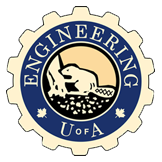
Assistant Professor
- PhD in Civil Engineering Materials, University of British Columbia, 2003
- M.A.Sc. in Civil Engineering Materials, University of British Columbia, 1998
- B.Tech. in Civil Engineering, Banaras Hindu University (India), 1996
Contact information:
Department of Civil and Environmental Engineering
Office: 3-020 Markin/CNRL Natural Resources Engineering Facility
Phone: 780 492 9661
E-mail: vivek@ualberta.ca
Research Interests
My research interests lie in the toughness enhancement of brittle matrix composites, which is incredibly important to the practical viability of the built environment. Thus far, my research activities have spanned two broad categories: a) Understanding th fracture mechanics of brittle-matrix composites and, b) Rehabilitation of existing infrastructure. In the first category, my research has been on the fracture mechanics of fiber reinforced gypsum and concrete, where in I focused on both the test method and the material characterization. I configured an instrumented drop-weight impact machine to study Mode I crack propagation in FRC, and examined the influence of fibres (material, geometry) in crack growth under impact. My research on size effects under impact is among the first on plain concrete and the first known work on FRC. Until three years ago, while at USG (industry), I focused on the mechanisms of failure in gypsum wall-boards, and my proposals have lead to a reduction in board weight. I have been involved with the use of innovative materials in repair (parkade, Vancouver) and structural health monitoring (Brookside Cemetery, Winnipeg). The repair of the parking level in Vancouver is the first documented application of hybrid fibre reinforced concrete.
A related and continuing interest is in shotcrete technology, where in I have explored the use of industrial waste and by-products towards a) limiting land-fill problems, b) easing shotcrete production and c) improving shotcrete structural properties. This interest spans both civil and mining engineering applications. In 2007, data from my study on the boiled absorption and permeable voids in shotcrete was used to define the ACI guideline on this topic within the ACI Committee 506 (Shotcrete).
Research Currently in Progress
Current research is along two broad initiatives: a) development of tough lightweight and controlled low strength building materials; b) relating durability to fracture toughness in cement-based materials. Within the first scheme, I am developing fibre reinforced hydraulic lime mortars to enhance durability and toughness in heritage stone masonry structures. Here, I am part of a 3-phase program (with the Universities of Manitoba and Calgary) commissioned by Public Works Canada, on the study of repointing mortars for the seismic rehabilitation of Heritage Masonry Structures with particular emphasis on the rehabilitation of the Parliament of Canada. For the first time, hydraulic lime mortars were characterized at high loading rates, described in detail in journal publications (under review) and one MSc thesis by my student, Ms. Rachel Chan. Also, lightweight composites are being studied for toughness enhancement at high strain rates to be applied in shock absorption and protective construction. This has led to fundamental studies on shear enhancement in RC members, specimen size effects and density effect on the strain rate sensitivity of concrete. Within the second scheme, I am investigating the permeability of high performance concrete under mechanical stress. This effort has the support of CTEP (consortium of members in Alberta with interest in Transportation Engineering). It is expected that this project will lead to a more realistic standardized test method for concrete durability.
Professional Experience
- 2005 to Present: Assistant Professor, Department of Civil and Environmental Engineering, University of Alberta, Edmonton, Alberta, Canada.
- 2005: Member Technical Staff, Research and Technology Centre, United State Gypsum Corporation, Libertyville, Illinois, USA.
- 2004 to 2005: Postdoctoral Research Fellow, Intelligent Sensing for Innovative Structures (ISIS Canada), University of Manitoba, Winnipeg, Manitoba, Canada.
- 2003 to 2004: Postdoctoral Research Fellow, Department of Civil Engineering, University of British Columbia, Vancouver, British Columbia, Canada.
Professional Affiliations
- Associate Member, Canadian Society for Civil Engineering
- Member, American Concrete Institute
- 544 (Fiber Reinforced Concrete)
Journals
- V. Bindiganavile and N. Banthia, ‘Impact response of the fiber-matrix bond in concrete’, (Accepted) Canadian Journal of Civil Engineering, 2005.
- Vivek Bindiganavile and Nemkumar Banthia, ‘Process Dependence of Shotcrete for Repair’, (Accepted) International Journal of Materials & Product Technology, 2005.
- Bindiganavile, V. and Banthia, N., ‘Generating dynamic crack growth resistance curves for fiber reinforced concrete’, Experimental Mechanics, Vol. 45, no. 2, Apr 2005, pp. 112-122.
- Bindiganavile, V. and Banthia, N., ‘Comment on: “Size effect for high-strength concrete cylinders subjected to axial impact” by Krauthammer et al.’, International Journal of Impact Engineering, Vol. 30, no. 7, August 2004, pp. 873-875.
- Bindiganavile, V. and Banthia, N., ‘Crack growth resistance of fiber reinforced concrete under drop-weight impact loading’, ACI SP-216, Fiber Reinforced Concrete: Innovations for Value, (Eds. N. Banthia, P. Tatnall, M. Criswell & K. Folliard), 2003, pp. 203-220.
- Bindiganavile, V., Banthia, N and Aarup, B., ‘Impact response of ultra-high strength fiber reinforced cement composite’, ACI Materials Journal, Vol. 99, no. 6, Nov-Dec, 2002, pp. 543-548.
- Bindiganavile, V. and Banthia, N., ‘Some studies on the impact response of fiber reinforced concrete’, Journal of the Indian Concrete Institute, Vol. 3, no. 3, Oct-Dec 2002, pp. 23-27.
- Nemkumar Banthia and Vivek Bindiganavile, ‘Admixture blends on steel fiber-reinforced dry-mix shotcrete: A comparative study of silica fume and high-reactivity metakaolin’, ACI Concrete International, Vol. 24, no. 8, Aug 2002, pp. 49-53.
- Bindiganavile, V. and Banthia, N., ‘Fiber reinforced dry-mix shotcrete with metakaolin’, Cement and Concrete Composites, Vol. 23, No. 6, Elsevier, 2001, pp. 503-514.
- Banthia, N. and Bindiganavile, V., ‘Repairing with hybrid-fiber-reinforced concrete’, ACI Concrete International, Vol. 23, No. 6, 2001, pp. 29-32
- Bindiganavile, V. and Banthia, N., ‘Polymer and Steel Fiber-Reinforced Cementitious Composites under Impact Loading, Part 1: Bond-Slip Response’, ACI Materials Journal, Vol. 98, No. 1, Jan-Feb 2001, pp. 10-16.
- Bindiganavile, V. and Banthia, N., ‘Polymer and Steel Fiber-Reinforced Cementitious Composites under Impact Loading, Part 2: Flexural Toughness’, ACI Materials Journal, Vol. 98, No. 1, Jan-Feb 2001, pp. 17-24.
- Bindiganavile, V. and Banthia, N., ‘Rebound in Dry-mix Shotcrete: Influence of Type of Mineral Admixture’, ACI Materials Journal, Vol. 97, No. 2, Mar-Apr 2000, pp. 115-119.
- Vivek, B.S., Sairam, R. and Nautiyal, B.D., ‘Silica Fume -An excellent Pozzolana’, Journal of the Indian Concrete Institute, Bulletin no. 59, Apr-Jun 1997, pp. 37-42.
Documents and Reports
- A. Mufti, M. Onofrei, E. Rivera, C. Klowak and V. Bindiganavile, ‘Structural health monitoring of field trial beam at Veteran Affairs Brookside Cemetery’, Technical Report, ISIS Canada Research Network, University of Manitoba, November 2004, 28 pages.
Conferences: Presentations (by self or as co-author)
- Nemkumar Banthia and Vivek Bindiganavile, ‘Process dependence of fiber reinforced shotcrete’, Shotcrete for Underground Support X, Whistler, BC, Sept. 12-16, 2006.
- Banthia, N., Bindiganavile, V. and Mindess, S., ‘Impact and blast protection with fiber reinforced concrete’, 6th RILEM Conf. on Fiber Reinforced Concrete (BEFIB), Sept. 20-22, 2004.
- Sorelli, L., Banthia, N., Bindiganavile, V. and Plizzari, G., ‘Static and dynamic responses of hybrid fiber reinforced concrete’, Int. Conf. Advances in Concrete & Structure, Xuzhou, China, May 25-27, 2004.
- V. Bindiganavile and N. Banthia, ‘Impact response of the fiber-matrix bond in concrete’, 3rd Asia-Pacific Conference on Fiber Reinforced Materials, Changsha, China, Nov. 17-18, 2003.
- V. Bindiganavile and N. Banthia, ‘Scaling of impact loaded plain concrete beams’, 5th Asia-Pacific Conference on Shock & Impact Loads on Structures, Changsha, China, Nov. 12-14, 2003.
- Bindiganavile, V. and Banthia, N., ‘Fiber reinforced concrete for blast and impact load: Lessons learnt’, ACI Spring Convention, Vancouver, B.C., Mar 30-Apr 2, 2003.
- Bindiganavile, V. and Banthia, N., ‘Crack growth resistance of fiber reinforced concrete under impact loading’, ACI Spring Convention, Vancouver, B.C., Mar 30-Apr 2, 2003.
- L. Sorelli, G.Plizzari, N. Banthia, V. Bindiganavile, ‘Flexural postcracking performance of hybrid fiber reinforced concrete from pullout of single fibers’, XVI National Conference of Italian Group Fracture (IGF), 20-22 June, Catania Italy, (in Italian).
- Bindiganavile, V. and Banthia, N., ‘Impact behaviour of polymer and steel fiber reinforced cementitious composites’, ACI Fall Session, Toronto, Canada, October 18-20, 2000.
- Banthia, N, Bindiganavile, V. and Chan, C., ‘Shotcrete: Is it just another concrete?’, International Conference on Infrastructure Regeneration and Rehabilitation, Sheffield, U.K., June 28 – July 2, 1999.


